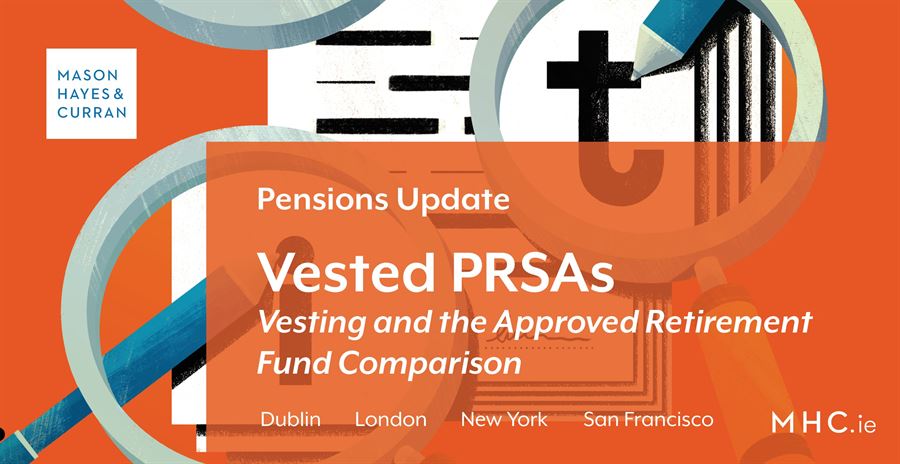
The Personal Retirement Savings Account (PRSA) facilitates long-term retirement savings by individuals. PRSA products are approved jointly by Revenue and the Pensions Authority. Here we look at the retirement option provided to those that hold a PRSA instead of a single member pension scheme or those that are members of an occupational pension scheme. We also compare what is known as the vested PRSA to the Approved Retirement Fund/Approved Minimum Retirement Fund.
PRSA contributions
The holder of a PRSA is entitled to tax relief against “relevant earnings” which is defined by the Taxes Consolidation Act 1997 as meaning earnings from a trade, profession, office or employment. The tax relief allowable for a PRSA is subject to two main limitations which are the age-related percentage limits and the overall limit that may be taken into account for tax relief purposes, which is presently €115,000. This limit is also a single aggregate earnings limit where, for instance, an individual has two or more sources of income and is making contributions to the PRSA and an occupational pension scheme. In that case the limit of €115,000 applies as an overall or total contribution limit.
 Vesting
Vesting
Where a PRSA holder has not commenced taking retirement benefits and has reached their 75th birthday, Revenue will treat the PRSA as vested and at that point the benefits can no longer be accessed by the PRSA holder. A vested PRSA is treated for tax purposes as the equivalent of an ARF. This means that an imputed distribution of 4% pa will apply to the PRSA and those that hold ARFs and vested PRSAs with a combined value in excess of €2m will pay an imputed distribution of 6% pa. On death, the vested PRSA will be treated in an identical manner to an ARF as it will form part of a deceased’s estate.
Vested PRSAs and ARF/A(M)RFs
Until the PRSA holder reaches the age of 75 the funds in the PRSA can be transferred to an ARF/AMRF or used to purchase an annuity. However, once the PRSA holder reaches age 75 and has not taken retirement benefits these options are no longer available and the retirement benefits in the vested PRSA are essentially frozen, though the annual imputed distribution will continue to apply. In the case of a deceased person’s ARF or vested PRSA the assets can be transferred into a new ARF in the name of the deceased’s spouse or registered civil partner. Any funds transferred from an ARF or vested PRSA to a child of the deceased over the age of 21 will be subject to income tax of 30% or subject to Capital Acquisitions Tax in the hands of any child under the age of 21.
Where an individual is not guaranteed an annual pension income of at least €12,700 and has chosen the ARF option at retirement then, after they have taken their tax free lump sum, they will need to open an AMRF as well and maintain a minimum balance of €63,500 (or use this amount to purchase an annuity). Similarly, where an individual has a vested PRSA and are not in receipt of the specified pension income then they will also need to keep €63,500 “ring-fenced” in the vested PRSA and only funds over this amount can be withdrawn.
There are also two notable differences between a vested PRSA and an ARF/AMRF:
-
As noted above, a vested PRSA holder cannot access their funds after their 75th birthday but an ARF holder can continue to drawdown funds at any time.
-
The vesting of a PRSA at the holder’s 75th birthday is a “benefit crystallisation event” for tax purposes which triggers a chargeable excess tax of 40% on any amounts over €2 million in the vested PRSA on the holder’s 75th birthday.
Conclusion
PRSA holders should consider their options carefully especially in light of the 75th birthday vesting threshold. Holders of non-standard PRSAs in particular should bear this in mind when considering investment in alternative asset classes which could prevent holders from taking retirement benefits from the PRSA before their 75th birthday, due to asset illiquidity and delay.
For more information regarding PRSAs and single member pensions, contact a member of our Pensions team.
The content of this article is provided for information purposes only and does not constitute legal or other advice.
Share this:






